Welcome to Part Eighteen of The Beginner’s Guide to Freediving, the best place to start your freediving journey. If you’re planning to start freediving, this chapter is all about about the monofin. It looks at the history of the monofin, construction and different types. Also using a monofin for freediving; how to train with one and how to select the right one for you.
The Freediving Monofin
In the 1990s, very few freedivers were using a monofin for freediving – it was a rarity in international competitions. Fast forward to today and it is bi-fins that are the rarity. It’s easy to see why: Monofins enable freedivers to dive deeper in open water and longer in the pool, and mastery of the technique gives you incredible confidence and power.
This article will look briefly at the history of the monofin, the design and construction of monofins and how to choose one that is right for you. It will also cover how to perfect your monofin technique, and includes exercises you can do both in and out of the water.
Using a Monofin for Freediving – Origin of the Monofin
Humans have always had an affinity with dolphins, and the mythology around mermaids links into this desire to emulate the tail movement of dolphins and whales. In 1971 a Russian woman called Svetlana Uspenikaia arrived at the European Fin-swimming Championships with a monofin she had constructed from two titanium branches, joined together by a ‘sail’. She blew the competition out of the water and the next year the Russian team all arrived with monofins.
It took a while for freediving to embrace the monofin, especially as at the time freediving records were few and far between and mainly based around the No Limits discipline. But in 1992 Rossana Majorca used a monofin to dive to 58m and the freediving world began to take notice. Monofins are now widely used for the pool discipline of dynamic with fins, constant weight freediving and variable weight diving. When used correctly, the monofin is much more effective for long and deep freediving than bi-fins, enabling you to feel a little bit more like our aquatic relatives in the water.
Using a Monofin for Freediving – Construction and Design
The basic monofin design is a pair of foot pockets attached to a single blade, however these individual components vary considerably in terms of design and construction.
With any fin, you want the best transfer of power from your body to the blade. This transfer of power relies most on through having a foot pocket that fits tightly on your foot. If you compare scuba fins, which are worn with a boot and heel straps, with a freediving bi-fin foot pocket, you will see that the tighter fit around the freediver’s foot enables a better transfer of the power that the diver’s leg produces.
There are many monofins on the market that take regular bi-fin foot pockets and attach them to a monofin blade. This has an advantage in that it is more comfortable to wear, however there are some disadvantages. Firstly, there will be more movement inside the foot pocket and a corresponding reduction in transferable power. Secondly, separate foot pockets can cause cracking or splitting of the blade between the foot pockets, as they are able to move slightly independently, stressing to the blade. Thirdly, with the use of bi-fin foot pockets it is not possible to adjust the angle of the blade relative to the body, which increases resistance in the water. Fourthly, it is not easy (and to my knowledge no-one has even done this) to cover the foot pockets and make them more streamlined where they meet the blade.
Monofins were initially developed solely for use in the sport of fin-swimming, where swimmers swam short distances and were not expected to spend a long time in the water. As a result, the foot pockets were very tight and could only be worn for a matter of minutes before becoming extremely painful to wear. There has been some evolution in the monofin market to address this with some companies inserting a layer of neoprene inside the foot pocket, but most monofin manufacturers do not offer this, instead suggesting you specify a larger foot pocket if you want more comfort or to wear the monofin with neoprene socks.
These foot pockets are usually made from a single mold that glues to the fin, thus reducing the risk of cracking from the use of two bi-fin foot pockets. It also enables the foot pockets to be built up, minimizing water resistance as it moves over the blade, along the feet and then the body. The materials used to create these foot pockets vary but are usually made from rubber, neoprene or sometimes plastic.
Using a Monofin for Freediving – The Blade
There is no limit to the thickness of a monofin blade, although as the monofin increases in thickness, the amount of water displaced by it increases and this makes the monofin harder to move through the water.
Monofin blades can be made from plastic, fiberglass, carbon fiber and carbon composite (carbon and glass fiber) materials. They are thickest towards the foot pockets and thinner towards the edge of the blade. There are lots of variations in thickness and this is achieved by layering more or fewer layers of fiberglass or composite materials on top of each other during manufacture. Layers are often shaped to create movement within the blade itself, without altering the overall shape of the monofin.
The softer the blade, the easier it is to move through the water and so softer fins are often used for dynamic apnea or long surface swims during fin swimming. Stiffer fins are more powerful and capable of propelling a freediver much faster through the water, but require greater strength, too – as a result they are worn mainly by men with good physiques. For deep diving, a stiffer fin is often used to power down from the surface to a diver’s point of negative buoyancy, and then up from the bottom to overcome negative buoyancy.
Blade angle is also something to consider in relation to hydrodynamics, both in dynamic and depth disciplines. When your legs are extended, it is almost impossible to point the toes enough to create a straight line when a standard fin is worn. As a result, some monofins have an angled blade so that when your leg is extended, the fin blade is in line with your body.
An angled blade means that when dynamic apnea is performed, it is possible to move the fin and then glide, as there is little drag from the monofin itself. Likewise, in depth disciplines it means that when free-fall is achieved, the body can be very hydrodynamic.
Using a Monofin for Freediving – Wings
Wings are often added to the side of the monofin blade, perpendicular to the blade itself. These serve several purposes.
Firstly they help keep water on the blade, making the fin easier to use. With a standard monofin, the slightest shift in its position can cause the monofin to skew to one side, making it difficult to control, especially when one side of your body is stronger than the other.
Secondly, the wings help with hydrodynamics as they often form part of the foot pocket, helping the fin become a smooth extension of the body.
Thirdly, many wings are buoyant and this helps the blade move through the water. It is important to gauge the weight of a monofin, as it can add several kilos to your weight or, in the case of the glide fin, increase your buoyancy requiring more weight to be added.
Using a Monofin for Freediving – Related Equipment
- Short bi-fins – Often short bi-fins are used to learn the correct monofin technique. Usually they are used during surface swimming, as it is easier to use them on the surface than an actual monofin.
- Front snorkels – A front snorkels are often used instead of the regular side snorkel as it’s easier to keep your head in the correct position.
- Float – When training on the surface, a surface swimming float can be used to help maintain the correct arm position.
- Slim-fitting mask – A slim fitting mask is essential when using a front snorkel so that it can fit easily underneath. Alternatively you can use normal swimming goggles, with or without a nose-clip. A swim hat is also useful.
- Depth equipment – Fluid goggles and a nose-clip are often used with a monofin if the diver usually needs to pinch their nose to equalize. This is so that on the descent, the correct arm position can be maintained. When the glide is reached, the arms often then come to rest by the sides of the body. A neck weight is also often used in dynamic and constant weight diving to help with streamlining.
Using a Monofin for Freediving – Choosing and Fitting Your Monofin
If possible, borrow fins from other divers so you can assess the blade stiffness, angle of the blade and comfort of the foot pockets before buying your own. It can be useful to buy a cheap, soft blade first while you master the technique.
When you first wear your monofin you may even find it is seemingly impossible to put on! The socks and foot pocket will need to be wet and sometimes you can help ease it on with the use of a bar of soap. If you are have a tight monofin it is advisable to grease your feet with soap or another lubricant. Men may need to shave their feet if they are hairy. Sometimes people put their feet into plastic bags and then into the fin. Half-socks can be worn, which just fit over the top part of your feet.
To put on your fins, wiggle one foot in by moving the blade from side to side and then put the other foot pocket on. This is often best done out of the water. The back heel strap should always be worn over the back of the heel on the bone, not resting on the Achilles tendon!
When you first start using a monofin for freediving you may find that you can only use it for short periods of time until you have built up strength and flexibility. Cramp can also be an issue, so take it easy while you get used to it.
Using a Monofin for Freediving – Protecting and transporting your monofin
Monofin blades are very sharp and you must be incredibly careful not to drop the blade on anything remotely soft, such as your toes. Never pick the monofin up by the blade end or put it down resting on the blade end. Monofins should be rested flat, on the side edge or in their bags.
Monofin bags are often padded, but if you are in any doubt about looking after your monofin then remember not to put anything heavy on top of the bag when storing or transporting it. You can put foam pipe lagging along the blade edge to help protect it. When traveling overseas, pad out the bag with towels and clothes and make sure there is a fragile sticker on the bag.
Using a Monofin for Freediving – Monofin technique
Classic monofin technique is derived from fin-swimming and is intended to keep the body as streamlined as possible. This position can be very difficult to achieve and very uncomfortable at first. It can take a while to obtain the correct positionusing a monofin for freediving and then maintain it for the duration of a dive or swim.
To achieve the correct body position when using a monofin for freediving, your arms should be extended behind your head, with your chin tucked into your chest. One hand should be placed over the other and your arms positioned as closely together as possible. Your hands and arms should remain straight, forming an unbroken line with the back of your body.
You should maintain a straight line down your arms, through your body, down to your sternum. If you do it correctly, this line should run parallel to your dive line or the bottom of the swimming pool. All movement should come from your sternum and ripple down your body.
The hardest part for most people when practicing the monofin is keeping the legs straight, as it is easier to bend at the knees and get propulsion that way. This is not as efficient however as using the whole body, particularly the core muscles, and is why training for using a monofin can take time for some people.
Some divers dive with their arms by their sides for comfort, although this technique is rarely used by top-level freedivers.
Unless you can equalize hands-free or use fluid goggles and a nose-clip, when you descend during a constant weight dive it will be impossible to maintain the correct position due to the need to bring the arms and hand down to the nose to equalize. This should be a consideration when choosing what technique to adopt and what other equipment you want to use.
Using a Monofin for Freediving – Training with a monofin
To help avoid injury, when starting to train using a monofin for freediving it is important to use a soft fin or bi fins while slowly building up the time you spend in your monofin.
You can practice at the side of the pool, sitting on the edge with your feet in the water and also in the water vertically while holding onto the edge of the pool. The emphasis should always be on the forward stroke, as this is the most challenging and the point at which most people bend their legs.
You can also practice on your back and lying on your side. Side swimming is useful as you can use the lane ropes to assess whether or not you are favoring the forward or the backstroke.
Using a Monofin for Freediving – Safety When Using the Monofin
Blade awareness is paramount, both in and out of the water to avoid injury to yourself and others! It is possible to buddy, rescue and tow using a monofin but it is much easier to do this when using bi-fins which are much more maneuverable.
Using a Monofin for Freediving – Designing a Training Programme and Preparing For a Max Dynamic
Training for style is different from training for a max dynamic or for CO2 tolerance. Training for style usually takes place at the surface with a float. If bi-fins are worn then alternate swimming lengths using bi-fin kicking and monofin kicking. The same drills can be performed without the help of the swimming float.
When training for CO2 tolerance, the same drills that you have been using for bi-fin dynamic apnea can be used. Repetitive lengths with ever shorter recovery times in between can be used, or repetitive lengths with the same (short) recovery time can be used until exhaustion. Alternatively you can adopt an inverted pyramid training system, whereby you reduce the rest time between lengths before building it up again.
When training for a max dynamic attempt it is important to focus on the efficiency of your style and your turning. It is useful to count your fin strokes per length until an optimum amount is achieved. Then make sure you maintain this count as each length progresses. It is also useful to note the time it takes to swim each length and ensure that you do not speed up towards the end of your attempt.
To turn, you can perform a tumble turn like you would if you were swimming. However, this can sometimes cause the fin to be sucked towards the wall, so many freedivers touch the wall with one hand and turn with their fin away from the wall.
Using a Monofin for Freediving – Dry Training For the Monofin
It is imperative that strength and flexibility are built up out of the water to help reduce the risk of injury and improve style and performance in the water. Areas of the body that need flexibility training include your neck, shoulders, arms, lower back and your feet and ankles.
Areas of the body that need strength training include your core muscles and your thighs. Yoga exercises can help develop the flexibility and strength needed for using a monofin.
While a monofin is not as maneuverable as a pair of bi-fins and aren’t suited to buddying or recreational freediving, they offer some tremendous advantages. The monofin is an incredible piece of equipment for freedivers which, once mastered, will enable you to swim faster, dive deeper and dive for longer than you would with bi-fins.
Written by Emma Farrell
The Beginner’s Guide to Freediving is written by Emma Farrell. She is one of the world’s leading freediving instructors and has been teaching freediving since 2003. She is the author of the book ‘One Breath, a Reflection on Freediving’, has written courses that are taught worldwide, taught gold medal winning Olympic and Paralympic athletes, and has appeared numerous times on television teaching everyone from Hugh Fearnley-Whittingstall to Ellie Simmonds how to freedive.
Learn to freedive with the author of The Beginner’s Guide to Freediving
Go Freediving is the longest established, most experienced and friendliest freediving course provider in the UK, led by world class freediving instructor trainer Emma Farrell, and her team of personally trained instructors. No other course provider has such a good instructor to student ratio, safety record and personal touch.
Whether you’re a beginner dipping your toes into the world of freediving, a seasoned pro looking to turn professional, or simply a freediver of any level who wants the best freediving holiday in the world, we’re here for you!
Learn more about Freediving
Read the previous chapter of The Beginner’s Guide to Freediving – ‘Training for Recreational Freediving’ here now
Coming soon: the next chapter of The Beginner’s Guide to Freediving – ‘Diet for Freediving’
Keep in touch with everything Freediving
Subscribe to our mailing list for weekly newsletters with exclusive articles, news, films, offers and more!

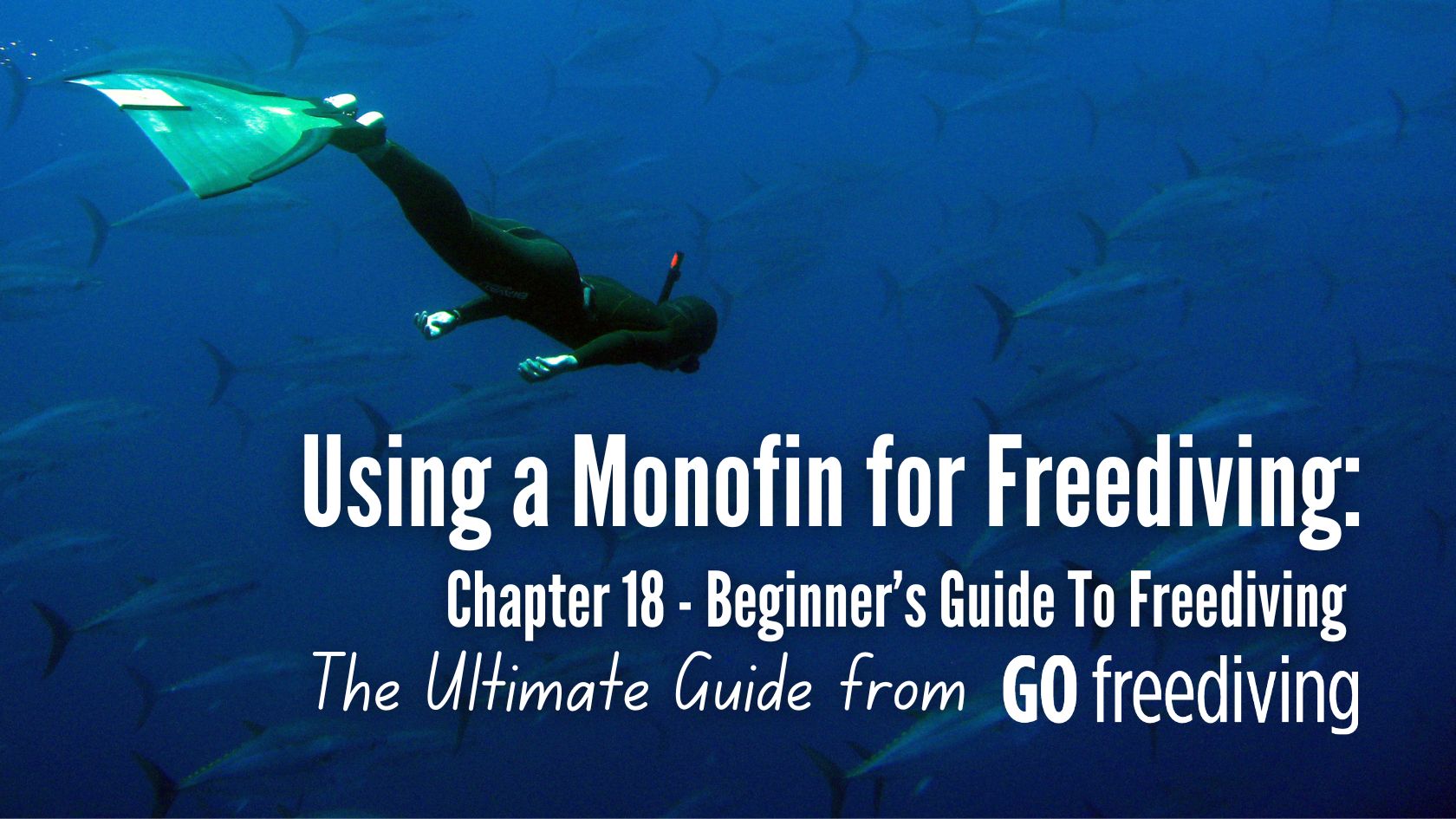
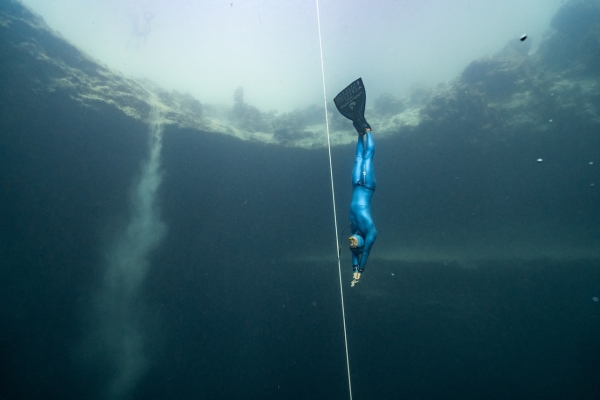
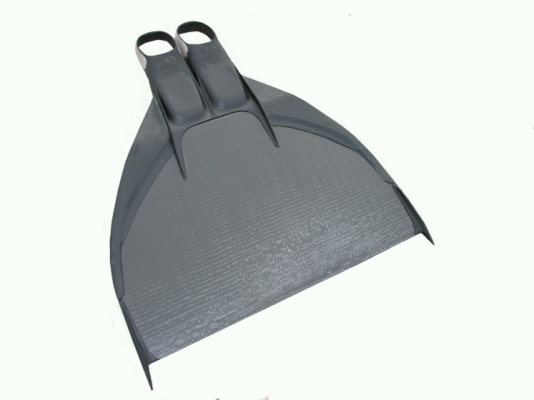
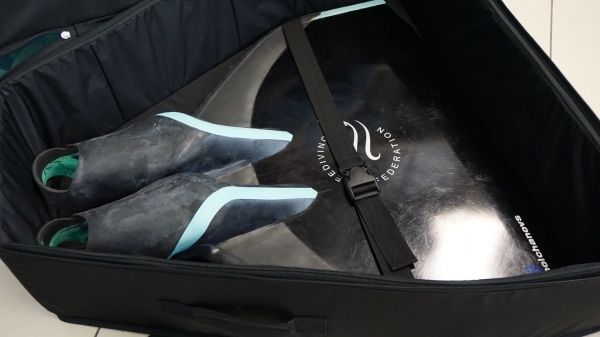
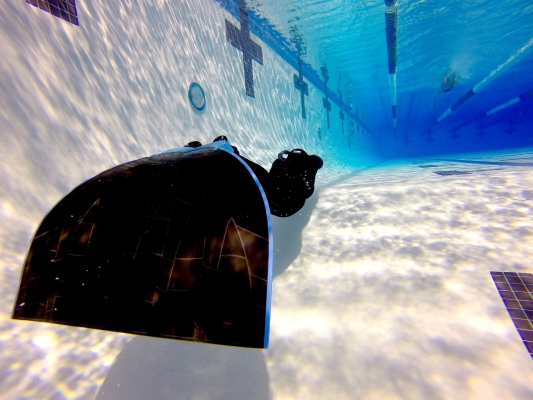





Leave A Comment